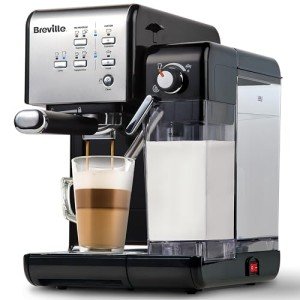Heat Exchange Espresso Machines: A Comprehensive Guide
Espresso machines have actually evolved considerably for many years, dealing with the requirements of home baristas and coffee specialists alike. Amongst Buy Coffee Maker , heat exchange espresso machines have acquired appeal due to their ability to deliver consistent performance and exceptional brew quality. In this short article, we will check out the workings, advantages, and essential functions of heat exchange espresso machines, providing a thorough understanding for both prospective purchasers and coffee lovers.
Understanding Heat Exchange Technology
Heat exchange espresso machines run on a distinct concept that enables simultaneous water heating for brewing and steaming. They are equipped with a single boiler that makes use of a heat exchanger system. Top Espresso Machines is significant as it makes it possible for users to brew espresso while steaming milk concurrently, promoting efficiency in the coffee-making procedure.
How Does a Heat Exchange Espresso Machine Work?
The process starts with the machine's water inlet filling the boiler. As the water warms up, it turns to steam. The innovative heat exchanger utilizes hot steam to heat additional water in a different passage designed particularly for the brew group. This means that water can reach the ideal developing temperature without waiting on the boiler to adjust. The crucial actions include:
- Water Fill: Water is drawn into the boiler.
- Heating Process: The boiler warms up as water is transformed into steam.
- Heat Exchange: Steam warms water in the heat exchanger tube.
- Brewing: Water from the heat exchanger is pushed through coffee grounds, extracting the tastes needed for an abundant espresso.
This procedure allows for fast temperature modifications and enhanced coffee extraction.
Benefits of Heat Exchange Espresso Machines
Heat exchange espresso machines provide a number of benefits, especially for those seeking to maximize their coffee experience. Here are some essential advantages:
- Simultaneous Brewing and Steaming: Users can brew espresso while steaming milk, making it perfect for hectic cafes and home baristas who value performance.
- Temperature level Stability: The boiler's steam pressure assists keep a stable temperature, which is vital for consistent espresso extraction.
- Adaptability: The design permits fast changing in between brewing and steaming, making it much easier to create different coffee drinks, from lattes to coffees.
- User-friendly: Models frequently feature available controls, making it possible for both beginners and skilled baristas to produce quality drinks.
- Professional Quality: Heat exchange machines are often used in commercial settings, offering users with high-quality developing performance in the house.
Secret Features to Look for in Heat Exchange Espresso Machines
When thinking about the purchase of a heat exchange espresso machine, there are numerous functions that a person ought to take into consideration:
- Build Quality: Look for machines made from long lasting materials, such as stainless-steel or brass, ensuring durability.
- Boiler Size: A larger boiler will hold more water and sustain greater output with time.
- PID Temperature Control: This feature helps maintain consistent brew temperatures, which can boost the coffee-making process.
- Group Head Design: Machines with a saturated or semi-saturated group head offer better temperature level stability.
- Alleviate of Use: User-friendly user interfaces and instinctive controls enhance the overall experience for baristas at all skill levels.
- Steam Wand Quality: A great steam wand with correct insulation and versatility permits for much better texturing of milk.
- Water Reservoir Size: Depending on your needs, think about how often you wish to fill up the water reservoir.
Contrast of Popular Heat Exchange Espresso Machines
To much better understand the options offered in the market, below is a comparison table of some popular heat exchange espresso machines:
| Machine Model | Boiler Size | PID Control | Cost Range | User Ratings |
|---|---|---|---|---|
| Profitec Pro 700 | 2.0 L | Yes | ₤ 2,000-₤ 2,500 | 9.5/ 10 |
| Rocket Espresso R58 | 1.8 L | Yes | ₤ 2,400-₤ 2,800 | 9.4/ 10 |
| Elekta Bianca | 1.8 L | Yes | ₤ 2,500-₤ 3,000 | 9.6/ 10 |
| La Spaziale S1 Vivaldi II | 1.5 L | Yes | ₤ 1,800-₤ 2,200 | 9.2/ 10 |
| Bezzera Magica | 1.2 L | No | ₤ 1,600-₤ 1,800 | 9.0/ 10 |
FAQs About Heat Exchange Espresso Machines
What is the main distinction in between a heat exchange and a dual boiler espresso machine?
While both types can brew espresso and steam milk at the exact same time, dual boiler machines have different boilers for brewing and steaming. On the other hand, heat exchange machines utilize a single boiler and a heat exchanger to achieve the same function.
Are heat exchange machines appropriate for newbies?
Yes! Numerous heat exchange machines are developed with user-friendly functions, making them available for novices. With Top Espresso Machines and practice, users can quickly produce quality espresso.
What sort of upkeep do heat exchange espresso machines require?
Routine maintenance includes descaling, cleaning the boiler, checking seals and gaskets, and keeping the group head clean. Routine upkeep guarantees durability and consistent performance.
Can I use a heat exchange machine for different kinds of coffee drinks?
Absolutely! Heat exchange machines permit users to create a variety of coffee drinks, including espresso, lattes, coffees, and more.
Heat exchange espresso machines represent a blend of development and tradition, offering coffee enthusiasts with the tools required for crafting the best cup. Their ability to at the same time brew and steam, integrated with precise temperature control, makes them an engaging choice for both home baristas and professionals. With the best knowledge on features and maintenance, users can unlock a world of charming coffee experiences, guaranteeing that each sip is as delightful as the last.

